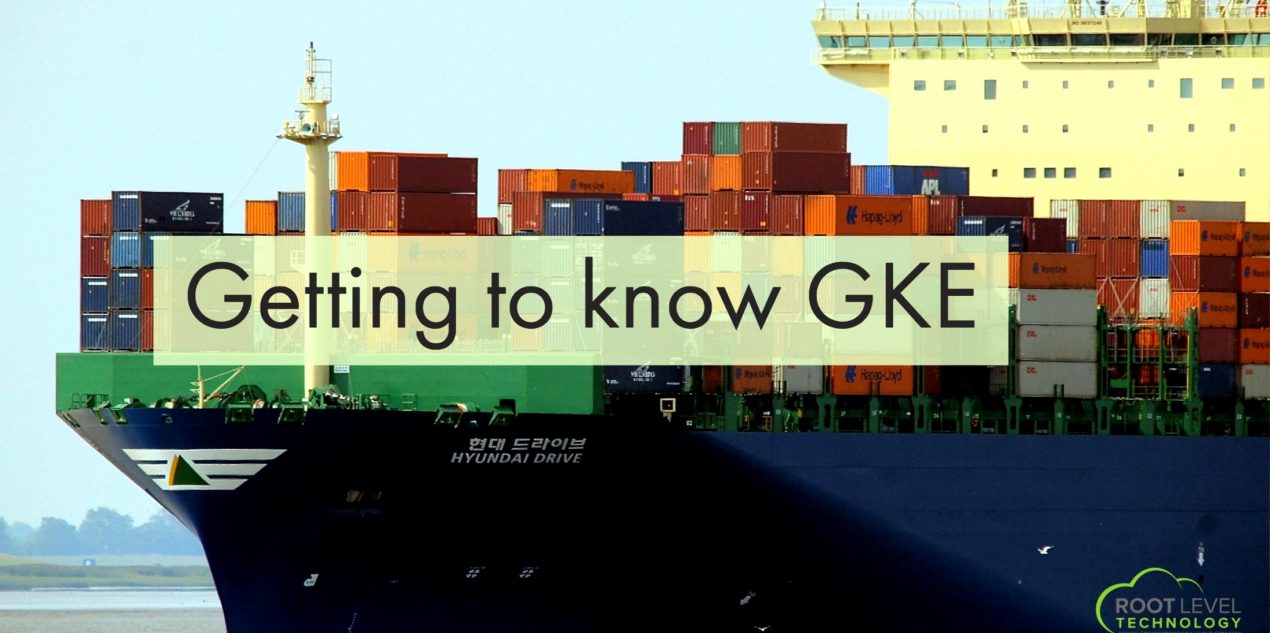This January, Root Level Technology CTO Eric Fourage presented a deep-dive webinar that introduces Google Kubernetes Engine. Getting To Know GKE starts with an overview of containers and their benefits, before exploring application infrastructure orchestration with Kubernetes and GKE, Google’s powerful Kubernetes-based cloud container platform.
This post is a brief overview of the webinar. Be sure to take a look at the presentation for a fuller explanation of containers, Kubernetes, and the Google Kubernetes Engine.
Containers
Containers are packages of software that bundle code and its dependencies, including system tools, libraries, and configurations. One way to think about containers is as a lightweight alternative to virtual machines. Like virtual machines, containers are self-contained environments that run code. Unlike virtual machines, containers don’t include the entire operating system — they use fewer resources and are faster to deploy and run.
Each container is a unit of executable code that can run anywhere the container runtime can. In the case of Docker, that’s everywhere from the developer’s laptop to the public cloud to bare metal servers. Containers are immensely popular in the development and operations world because they provide a standard, lightweight, and secure way to distribute and manage code and infrastructure.
But as useful as containers are, they wouldn’t be as impressive without an orchestration platform to deploy and manage them. That’s the role Kubernetes plays.
Kubernetes
Kubernetes is a platform for managing container deployments. It abstracts over the complexities of container cluster deployment and management. Users declare the containers they need, what they should contain, and how they should be connected; Kubernetes takes care of building and orchestrating the cluster, managing to compute, networking, and storage.
But Kubernetes is more than a simple orchestration platform. It includes functionality that simplifies application management, including code deployment, upgrades, scaling, load balancing, monitoring, and a lot more.
Together, containers and Kubernetes provide a full-featured application infrastructure management platform that is portable, hardware-independent, and feature-rich.
Google Kubernetes Engine
Once it’s up and running, Kubernetes provides developers with a powerful platform and a rich set of tools. But setting it up in the first place can be challenging. From choosing an infrastructure provider to configuring networking and security, deploying a Kubernetes cluster for the first time is not for the faint of heart.
That’s where Google Kubernetes Engine shines. GKE is an enterprise-grade container management service created by Google, which also created Kubernetes itself. GKE makes it easy to deploy a Kubernetes cluster on a secure and trusted platform. GKE takes care of security, networking, the underlying infrastructure, and performance. The user benefits from the full range of Kubernetes capabilities and GKE’s intuitive management interface.
This blog post has barely scratched the surface of what Kubernetes and the Google Kubernetes Engine can do. For much more information, look at our Managed Kubernetes offering and talk to one of our experts
Click the button below to get started!
